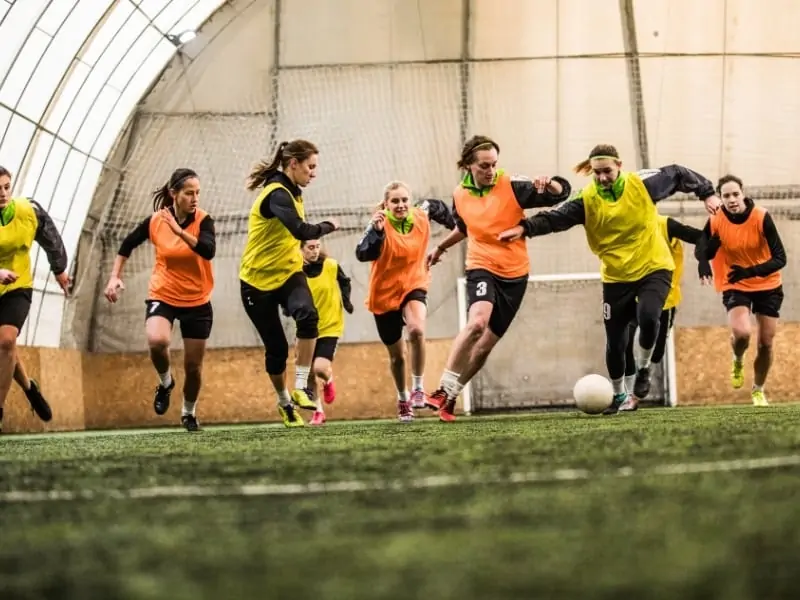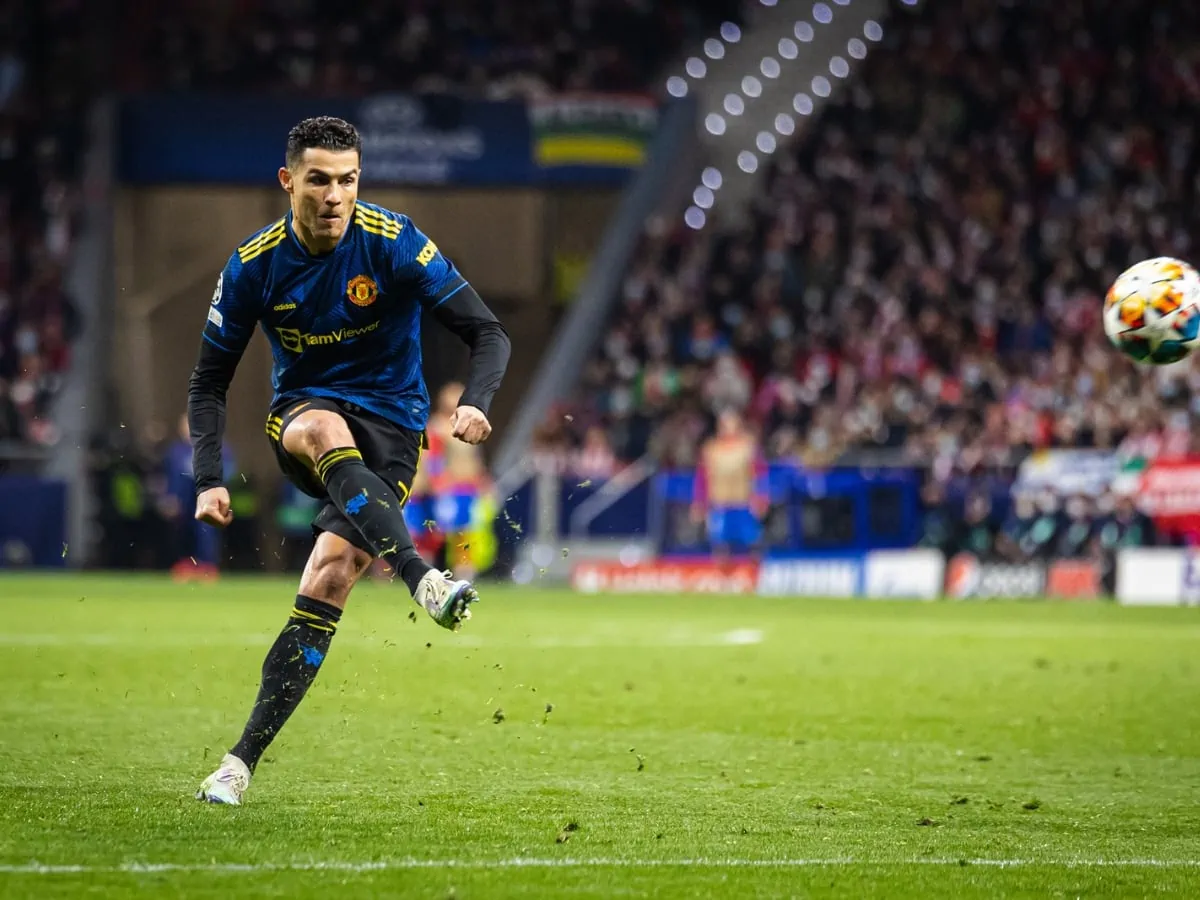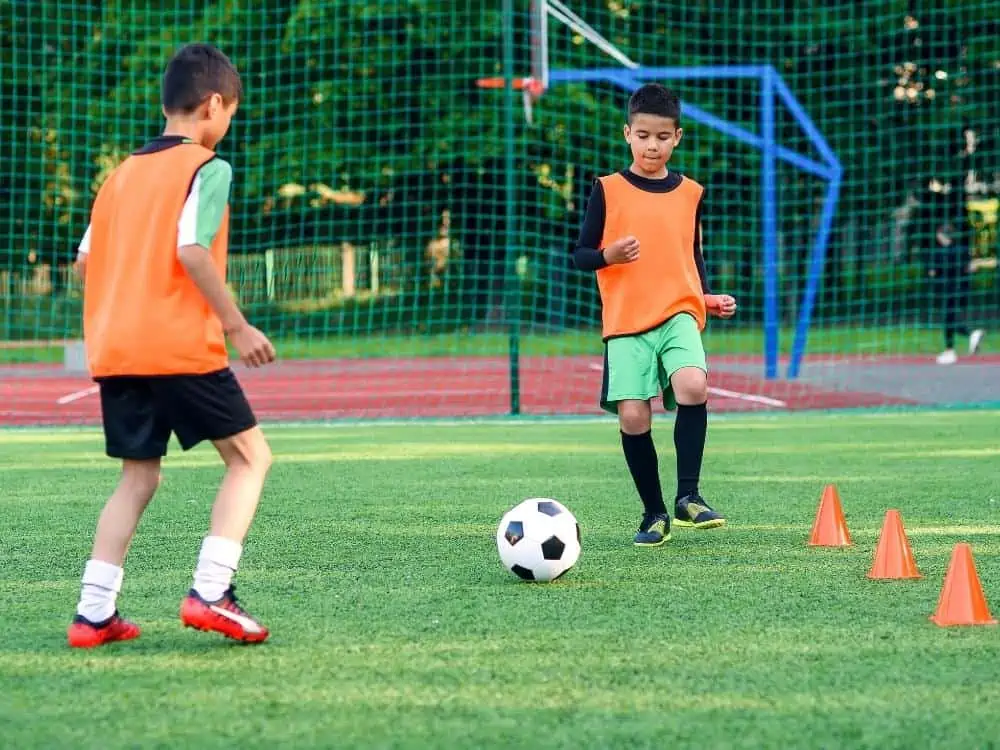Share the post "Ball Hog In Soccer (Greedy Players Not Passing)"
Some of the best soccer players on the planet are considered ball hogs. Players like Cristiano Ronaldo, Lionel Messi, and Ronaldinho are not known for their assist records but for their goal-scoring and insane dribbling skills.
So, how to deal with a ball hog in your soccer team?
- Dealing with a ball hog in your soccer team
- Dealing with a ball hog on the opponent’s team
- Soccer players that only dribble/ball hogs need to learn how to link up with teammates
- Hogging style of play: Is it considered good or bad?
As mentioned above, ball hogging is a trait of some of the best players in soccer leagues worldwide. The trick is that these superstars know when to be a hog and when not to be one.
So, in this article, we will look at ways to deal with a ball hog, either on your team or when playing against one.

How To Deal With A Ball Hog In Soccer
To get the ball from a ball hog, shout for the ball, wave your hands, or tell your coach if it continues.
Hogging the ball, a.k.a. dribbling, is something that the best players do very well. They love to have the ball and usually make things happen.
Either by scoring a couple of goals or winning the game for their team through a well-timed assist.
To become one of the greatest ball hogs, you will have to practice this skill fanatically, training yourself to be skilled enough to dribble past defenders, score goals, and move up the charts.
“Take or use most of all of something in an unfair/selfish way,” again, some of the best soccer players are often seen as super-selfish. When a player can back up the selfishness with skill, then no teammate or fan will mind.”
Hoggins
How do you deal with a dribbler that is not a Ronaldo or a Messi and negatively affects the team with his hogging of the ball?
Ball Hogs
So, you have a team member that loves to hog the ball without the required skillset to justify the hogging.
The worst part is that he does not recognize the painful observation that he is more of a liability than an asset. How would you go about dealing with this type of player?
The Coach
A coach is a significant person when dealing with any player, ball hog or not
The coach needs to address with each player what their role is on the pitch, how he wants them to play, the game plan, and ensure that the players upskill themselves on the practice field.
If a player is showing ball-hogging tendencies that lead to the constant loss of possession, no real attacking threat, or goals for that matter, it may be time that the coach addresses the issue in private with the player.
The coach will have to sit the player down, discuss the effect that the hogging has on the team, highlight the areas of his game that the player will be required to work on, including dribbling and passing.
It’s vital to have more than one capable dribbler in your team, in other words, a player that can spark something out of nothing. Coaching all the required skills when soccer players are still young is very important.
All aspiring soccer players will have to learn how to dribble and hog.

What can the coach do with a ball hog?
The coach will also have the option of moving the ball hog to another position, like a deeper defensive midfield position, or defense (should the player have the required skillset).
As these are positions where dribbling is not as important as in the midfield.
Should none of the remedies work, and the ball hog does not adapt to the coaches’ instructions, the coach can substitute the player during the game.
Benching him for the next one or demoting him to the second team until the required skill levels are achieved.
Training to Play Fairly
Training is essential because it preps players for situations that will arise in a soccer match. Players need to train in how to defend, attack, pass, cross, take free-kicks, take penalties, and so much more.
Discouraging a player that likes to dribble is the wrong approach. A better approach would be to constantly practice dribbling techniques with the whole team, not only the ball hog.
Tactical nous needs to be drilled into players and practiced so that it becomes second nature.
When identifying a ball hog in your team, you should not revert to instructing them to pass; this is not coaching. Instead, work on his speed, ball control, and dribbling abilities, positively enhancing the player’s performance.
Teach them about space awareness, keeping the head up, and looking for teammates to link up with when in trouble, as improving this skill set will result in a more rounded ballplayer.
Through proper training methods, the attacking dribbler (ball hog) can only get better.
The difference between the best-attacking players, and the average ones, is hard work.
If there is no improvement from the player through constant training, you will have to look at a positional switch, where his particular skill set will be better utilized.

How To Deal With A Ball Hog On The Opposing Team
Every team has its talisman, typically a ball hog who is very good at dribbling, either with enough skill to cause you problems or not good at all.
An average dribbler will ensure regular ball possession due to his selfish inability to pass at appropriate times and lack of technique.
Suppose the opposing team’s ball hog is a selfish player with enough skills to get regular shots off on target.
In that case, the good idea is to get an extra defensive player (usually a defensive midfielder) to man-mark the ball hog.
When the opposing team’s ball hog is just an average player, let him play his “normal” game.
If your team’s defense is up to scratch, they should be able to dispossess him frequently, seeing that he is not looking to score goals himself.
The turnaround in possession will allow your team to counterattack from the back and score goals.
Be aware that the ball hog can suddenly start passing to unmarked players to expose the unprotected space that the extra defender creates by zoning in on him the whole time.

Is Hogging The Ball A Good Or Bad Habit?
Hogging the ball is also known as dribbling in soccer. One player is trying to beat another player by using the skill of their feet.
It is what makes the world of soccer exciting and why many of us are fans today. Dribbling is an art; no one does it better than Lionel Messi (The King of Dribbling).
When a young player has the confidence to keep the ball at their feet in a game situation, the hogging of the ball should be encouraged, and most importantly, nurtured!
Never stifle a player’s willingness to keep possession; they could turn out to be game-changers in the future!
Dribbling is a part of the game that every player needs in their arsenal of weapons, from the goalie to the striker.
The trick is to coach the player to become very good at this art, know when to hogg the ball, and when to pass.
When playing in more structured or professional soccer leagues, you will face more structured defensive systems.
When defenses are tight, you will need a dribbler (hog) that can unlock these stingy defenses with a moment of brilliance.
Imagine coaches telling Messi and Co not to dribble but to pass, pass, pass!
Sources
Share the post "Ball Hog In Soccer (Greedy Players Not Passing)"
Joel is a seasoned soccer journalist and analyst with many years of experience in the field. Joel specializes in game analysis, player profiles, transfer news, and has a keen eye for the tactical nuances of the game. He played at various levels in the game and coached teams - he is happy to share his insight with you.



